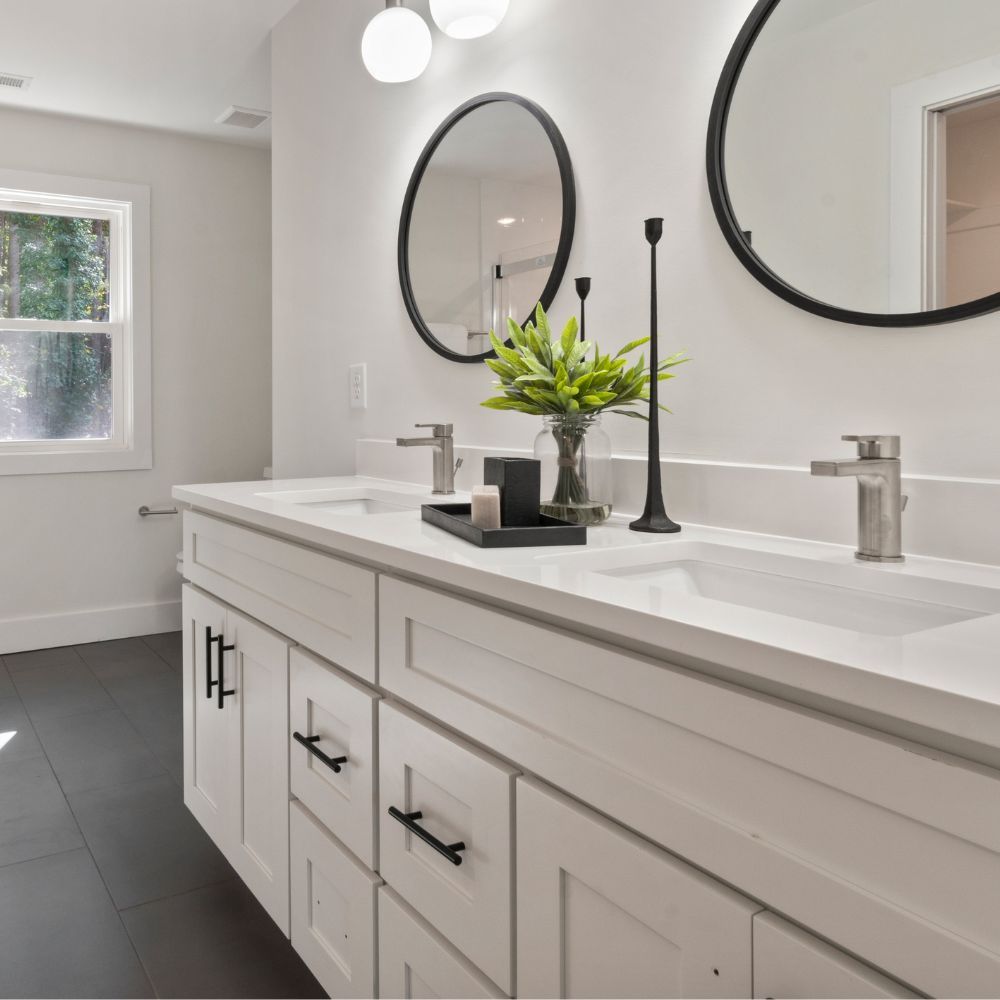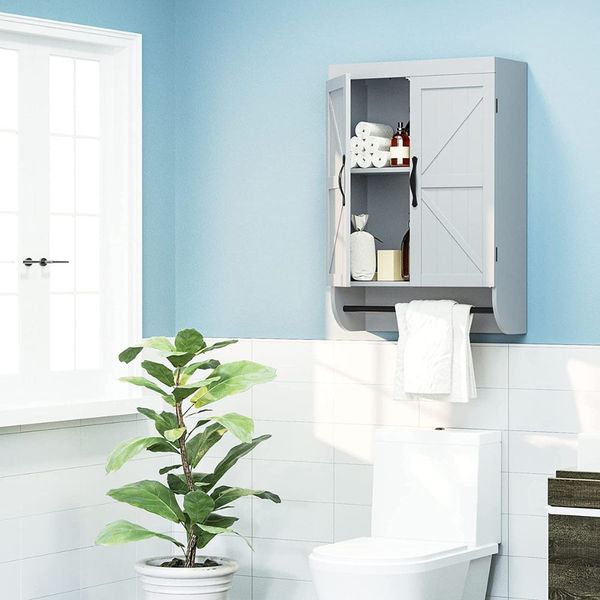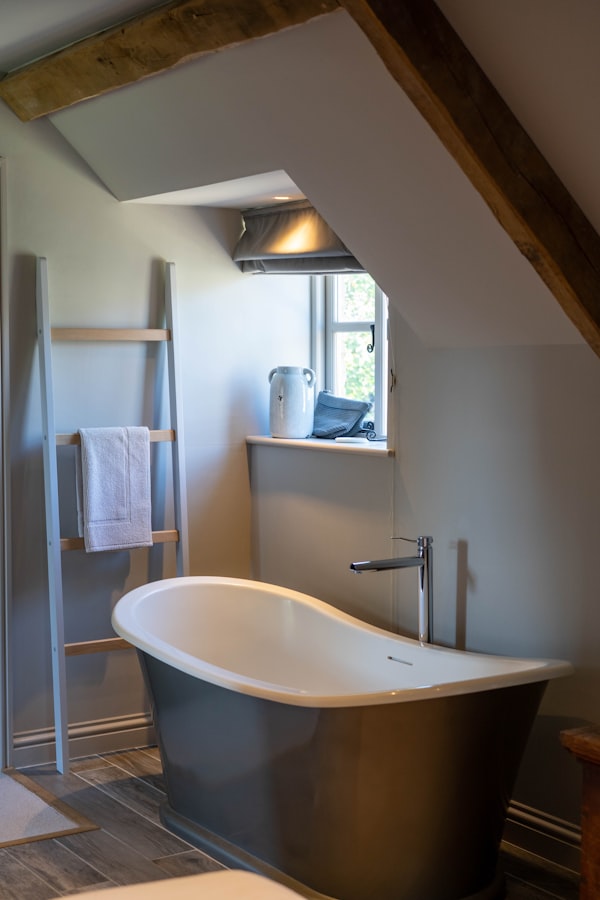A bathroom vanity can add both style and function to your space, but there may come a time when you need to remove it. Maybe you're renovating and need to replace it with a new one, or maybe you're moving and need to take it with you. Whatever the reason, removing a bathroom vanity isn't as difficult as it may seem. With a few tools and a little know-how, you can have that vanity out of your bathroom remodel in no time.
Disclaimer: We are a participant in the Amazon Services LLC Associates Program. We are also an Affiliate for other Companies and may earn a commission for purchases made thru some of our links.
Steps to Remove a Bathroom Vanity
Here are the basic steps you'll need to take to remove a bathroom vanity:
1. Turn off the water supply to your vanity
This is usually done by shutting off the main water supply to your home, but if your vanity has its own shut-off valve, you can turn that off instead. Either way, this will prevent any water from spilling out when you remove the faucets later on.
2. Remove the faucets from your vanity
Unscrew the nuts that hold the faucets in place and carefully pull them out of the holes in the countertop. If there are any washers or gaskets attached to the underside of the faucets, remove those as well and set them aside for later.
3. Disconnect the drain pipes from the underside of your sink
There are usually two drain lines one for hot water and one for cold but there may only be one if your sink is connected to a single line. Unscrew the nuts that hold these pipes in place and carefully disconnect them from the drain assembly beneath your sink. You may need a wrench or pliers to loosen these nuts.
4. Remove any hardware from your drawers and doors
This includes things like drawer pulls, door handles, hinges, etc. Once all of the hardware is removed, you should be able to easily pull out the drawers and remove the doors from their hinges.
5. Detach your vanity top from the rest of the unit
If your vanity has a countertop, there will be screws holding it in place along the edge where it meets the base cabinet. Remove these screws and lift off the countertop. If your countertop is made of stone or another material that can't be removed without damaging it, you may need to hire professional help to disassemble your vanity completely.
6. Remove any remaining screws holding your vanity in place
These will likely be located along the edges where your vanity meets the wall or where it meets other fixtures in your bathroom (like a toilet). Once all of these screws are removed, you should be able to carefully lift your vanity away from the wall and out of your bathroom completely.
7. Clean up any debris left behind and dispose of it properly
This may include things like old caulk, silicone sealant, nails, screws, etc. Once everything has been cleared away, you'll be ready to install your new vanity!
How much does it cost to take out a bathroom vanity?
If you're thinking of taking out your old bathroom vanity and replacing it with a new one, you might be wondering how much it will cost. Here's a look at some of the factors that can affect the price.
Size
The first thing to consider is the size of your bathroom vanity. Vanities come in a variety of sizes, from small single-sink units to large double-sink models. The size of your vanity will impact the overall cost because larger vanities generally cost more than smaller ones.
Material
The material of your vanity is also important to consider. Vanities can be made from a variety of materials, including wood, laminate, or even stone. Heavier materials like stone will usually cost more than lighter materials like laminate.
Plumbing
Another factor to consider is whether or not you'll need to do any plumbing work when installing your new vanity. If you're simply replacing an existing vanity, then you likely won't need to do any plumbing work. However, if you're starting from scratch, then you'll need to factor in the cost of running new water lines to your bathroom.
Electrical
Similarly, if you're starting from scratch with your bathroom vanity installation, then you'll need to factor in the cost of running new electrical lines as well. This is necessary if you want to install a unit with integrated lighting or other electrical features.
Is it cheaper to build a vanity or buy one?
Is it cheaper to build a vanity or buy one? Let's take a look at the pros and cons of each option so you can make an informed decision.
Building a Vanity
The biggest advantage of building a vanity is that you have complete control over the design. You can choose the style, materials, and size that you want. This means that you can get exactly the vanity that you want instead of settling for something that's close. It also means that you can make sure that the vanity fits well in the space that you have available.
Another advantage of building a vanity is that you can save money by using recycled or salvaged materials. If you're handy, you may even be able to find some of the materials for free. Just be sure to factor in the cost of your time when you're calculations.
The main downside of building a vanity is that it will take longer than buying one. If you're not experienced in woodworking or construction, it may take even longer. And if you make any mistakes, it could end up costing more than if you had just bought a vanity to begin with.
Buying a Vanity

The biggest advantage of buying a vanity is that it's less work than building one from scratch. You don't have to worry about making any mistakes or finding all the right materials. You can simply order the vanity online or pick one up at your local home improvement store.
Another advantage of buying a vanity is that it's usually cheaper than building one yourself especially if you factor in your time. Of course, this depends on where you purchase the vanity and what type of quality you're looking for.
In some cases, purchasing a higher-end vanity may actually end up costing less than if you had built one yourself because all the materials are included and the quality is guaranteed.
Installation
Finally, don't forget to factor in the cost of installation when budgeting for your new bathroom vanity. Unless you're a experienced DIYer, it's best to leave this job to the professionals. Installation costs can vary depending on the complexity of the job and the hourly rate of the installer.
How long should a bathroom vanity last?
There are three main types of bathroom vanities: stock, semi-custom, and custom. Here's a look at how long each type lasts:
- Stock vanities are the least expensive and most widely available type of vanity. They are mass-produced in standard sizes with little to no customization options. Stock vanities typically last between 10 and 20 years.
- Semi-custom vanities offer more style options than stock vanities but are still produced in relatively large quantities. This means that they may not fit your bathroom as perfectly as a custom vanity would, but they will be less expensive. Semi-custom vanities usually last between 15 and 20 years.
- Custom vanities are made to order according to your specifications. This means that they will fit your bathroom perfectly but also come with a higher price tag. Custom vanities typically last between 20 and 30 years.
So, what's the best option for you? If you're on a tight budget, a stock vanity may be the way to go. If you have a bit more to spend and want more style options, a semi-custom vanity is a good choice. And if you're willing to invest in a long-lasting piece, a custom vanity is the way to go.
Conclusion
Removing a bathroom vanity may seem like a daunting task, but with a little know-how and the right tools, it's actually quite easy! Just be sure to turn off the water supply before you get started, and be careful not to damage any of the pipes or fixtures as you disassemble your old vanity. With just a few simple steps, you'll have that old vanity out of your bathroom in no time.
Please jump over to our Home Page for more helpful Articles.








